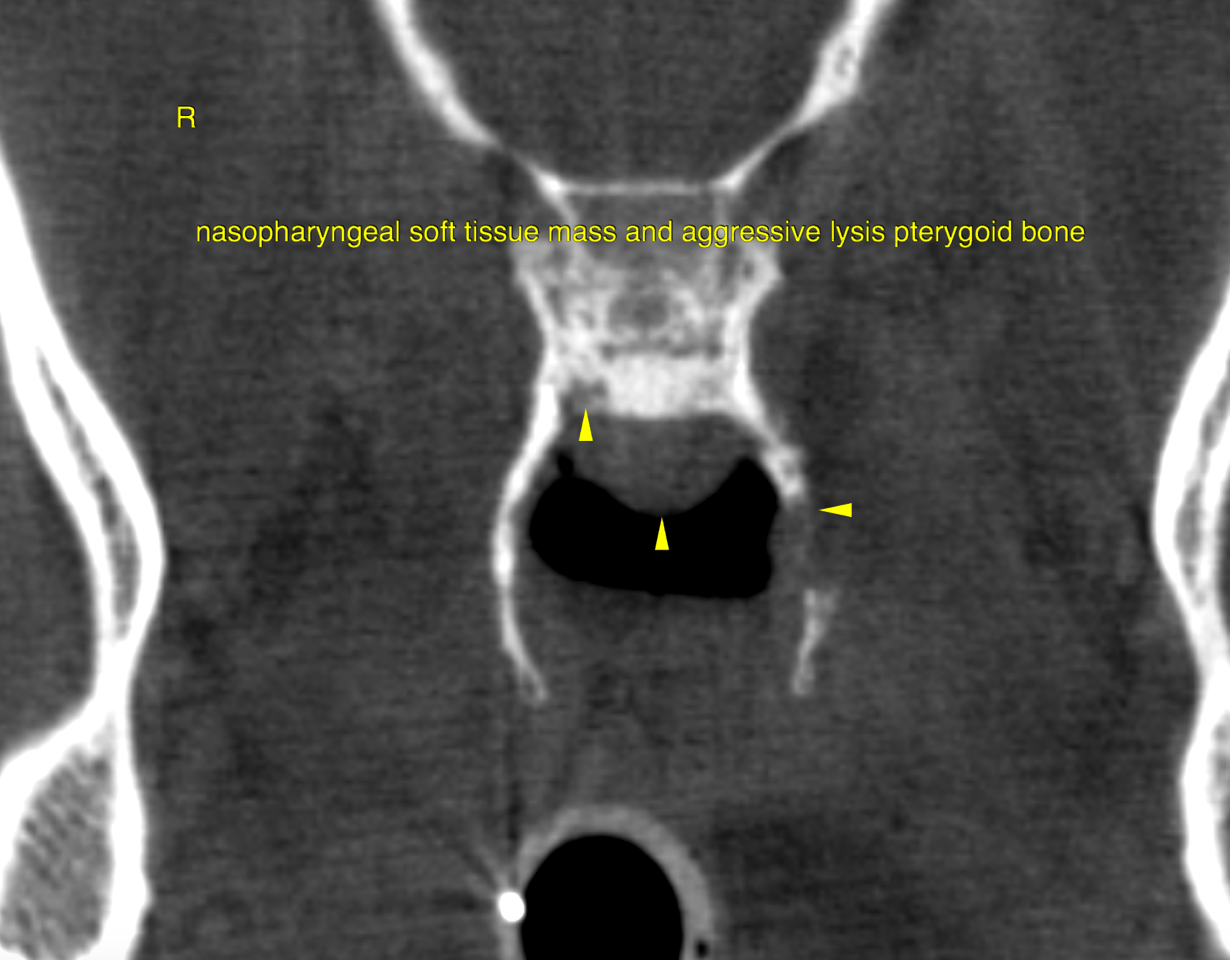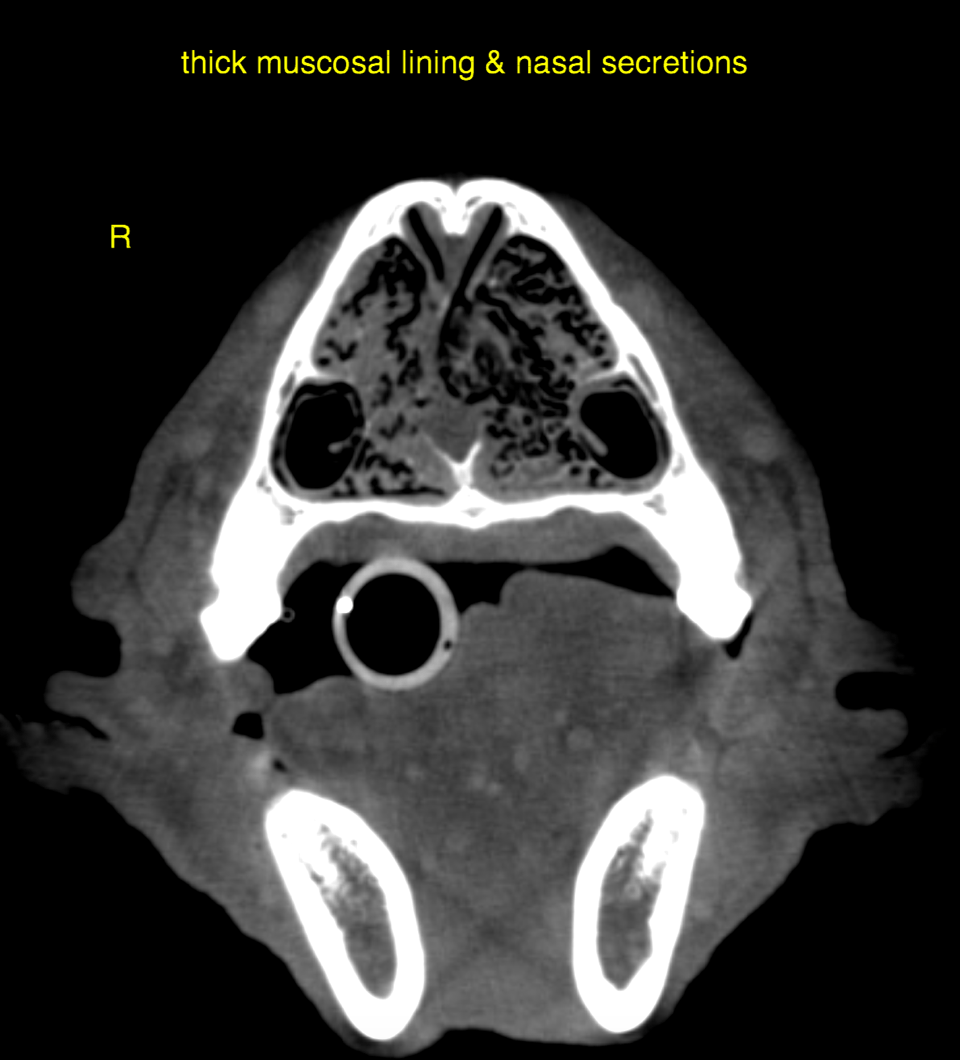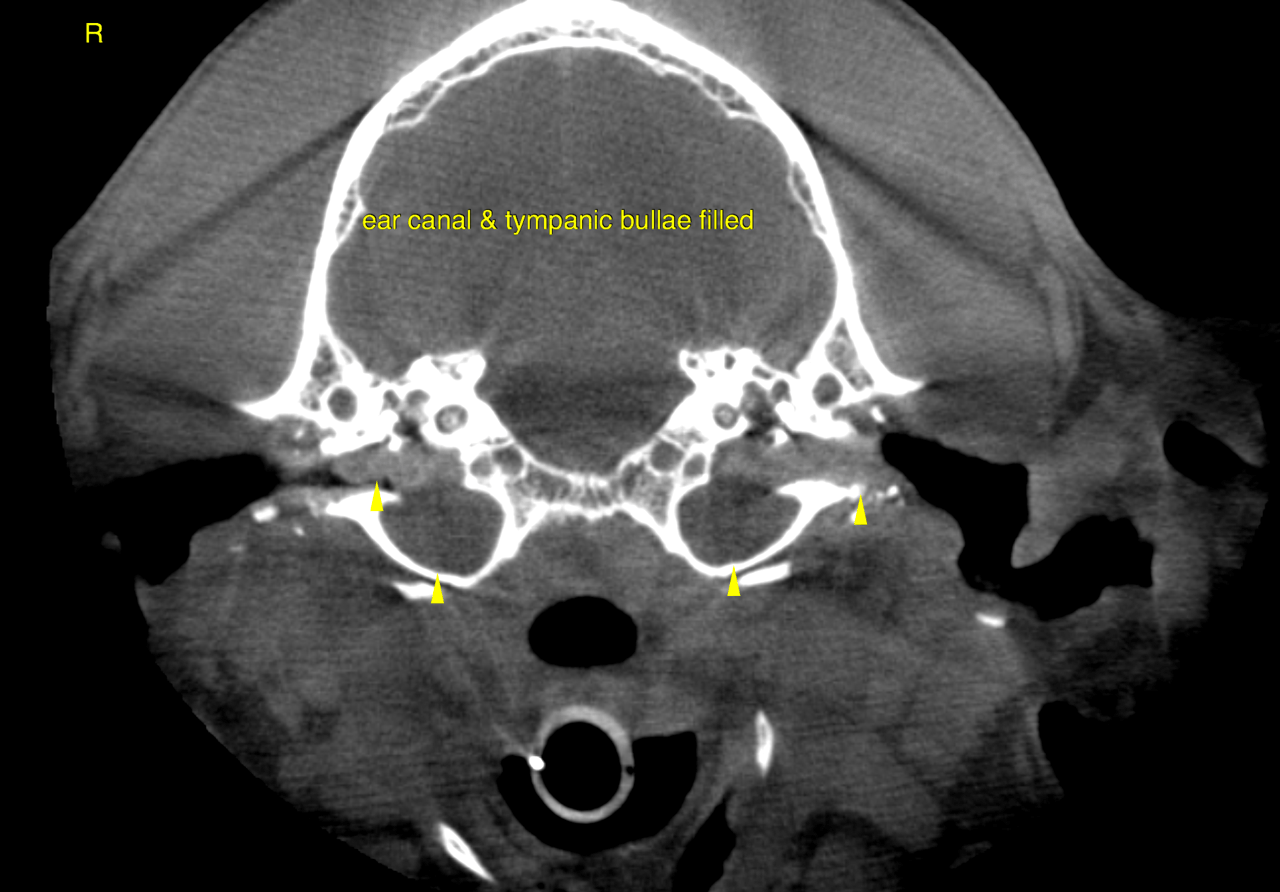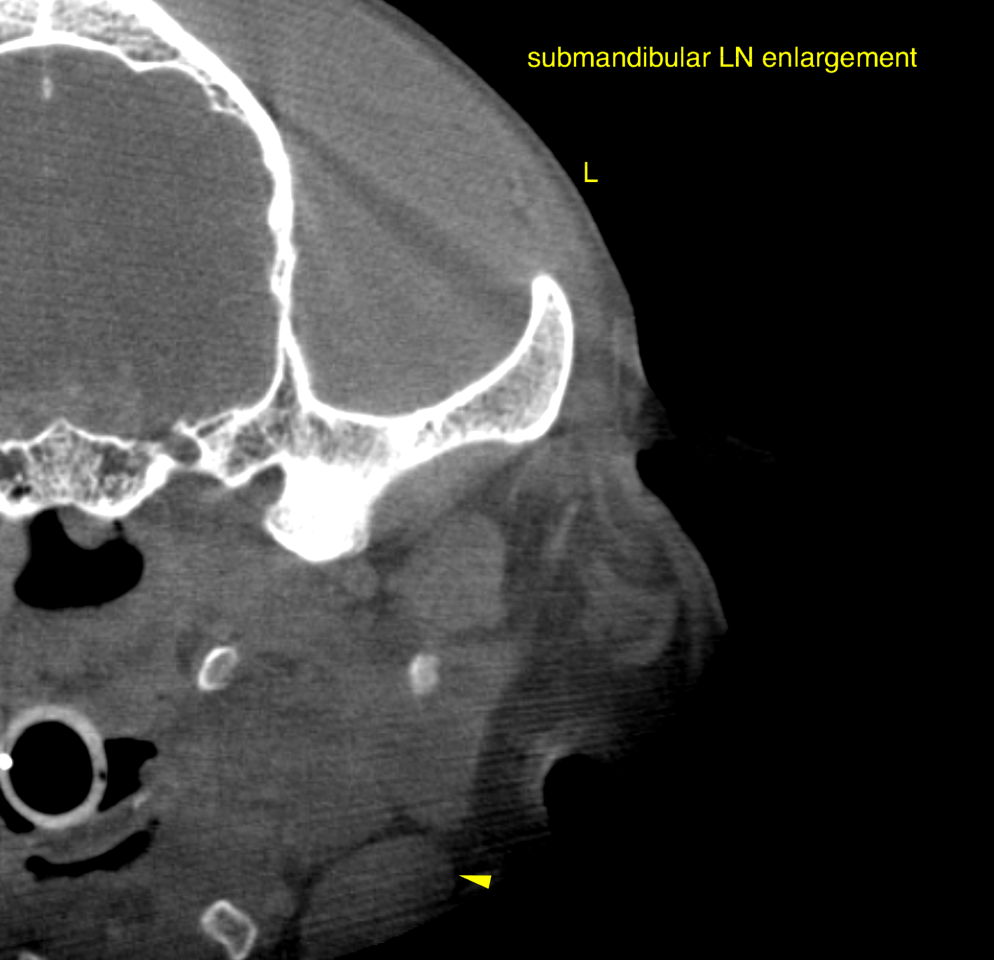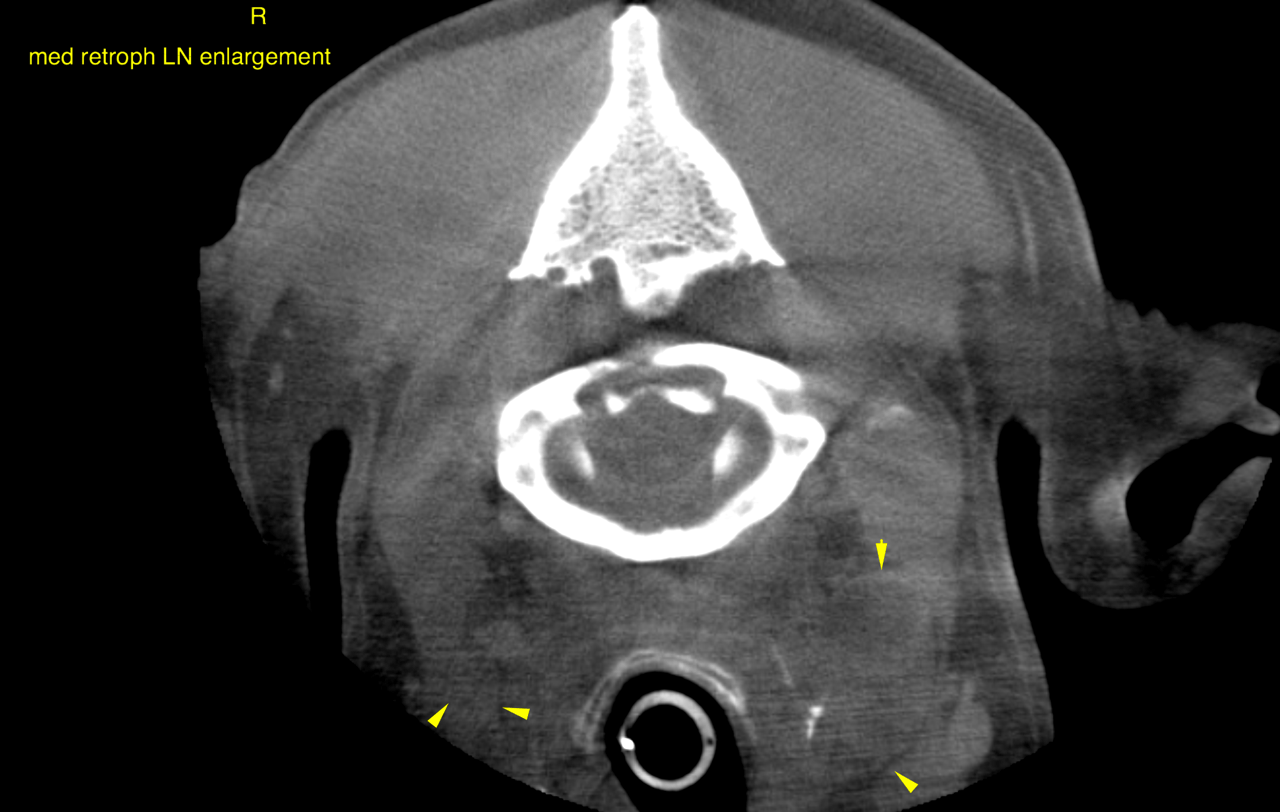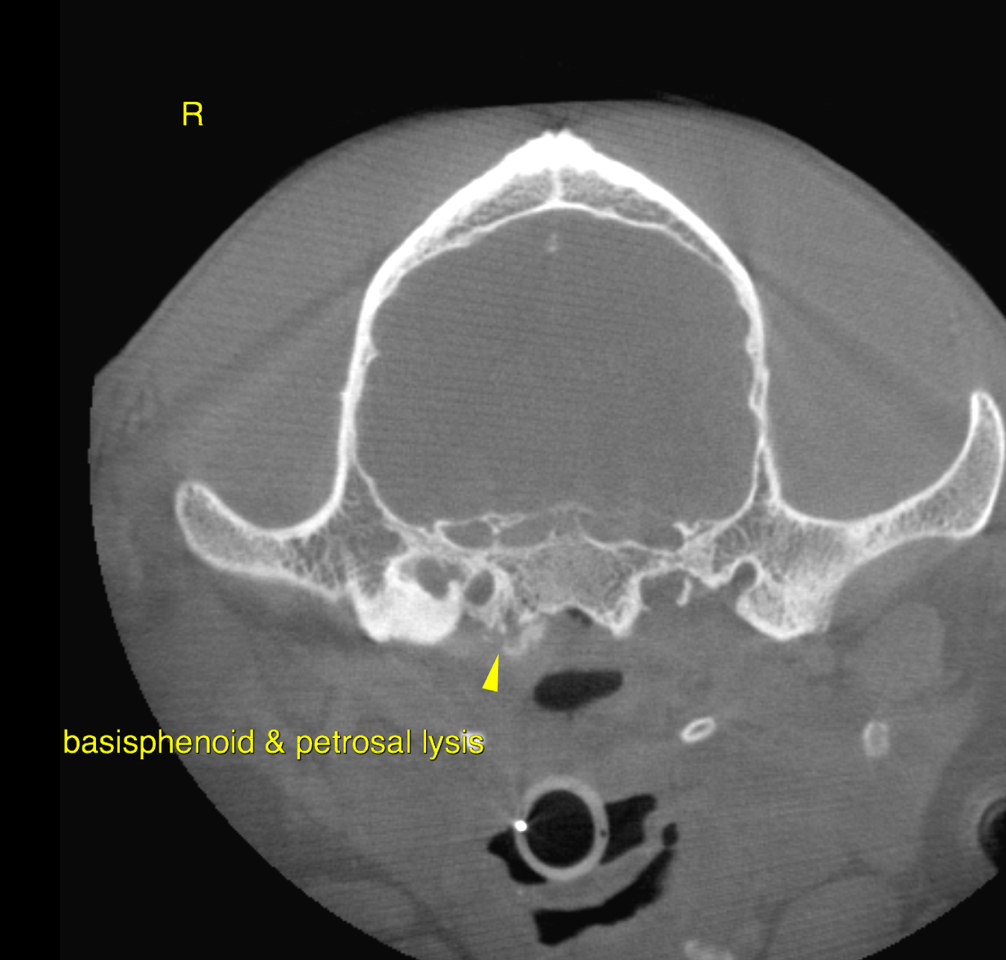CT of the head- Varying degrees of adenomegaly at up to 4.0 cm diameter are noted for the lymph nodes of the head including the medial retropharyngeal, submandibular and parotid nodes. The affected lymph nodes present with increased short-to-long-axis ratio, asymmetric enlargement and heterogeneous contrast enhancement. Regional fat stranding is noted in the proximity of the nodes. The findings are more pronounced on the left side.
There is a dorsal nasopharyngeal soft tissue mass measuring 7 mm in diameter with secondary aggressive permeative osteolysis at the hamulus and the base of the pterygoid. One focus of osteolysis and amorphous osteoproliferation extends to the right basisphenoid and petrosal part of the temporal bone and involves the exit zone of the peripheral branches of the right trigeminal nerve.
Both nasal cavities present mild thickening of the mucosal lining and mildly increased secretions without signs of turbinta destruction
Both tympanic bullae and the most medial aspect of the ear canals are filled with soft tissue attenuating material. The material within the ear canals reveals mild contrast enhancement. Both ear canals present marked medial tapering and generalized wall thickening.
